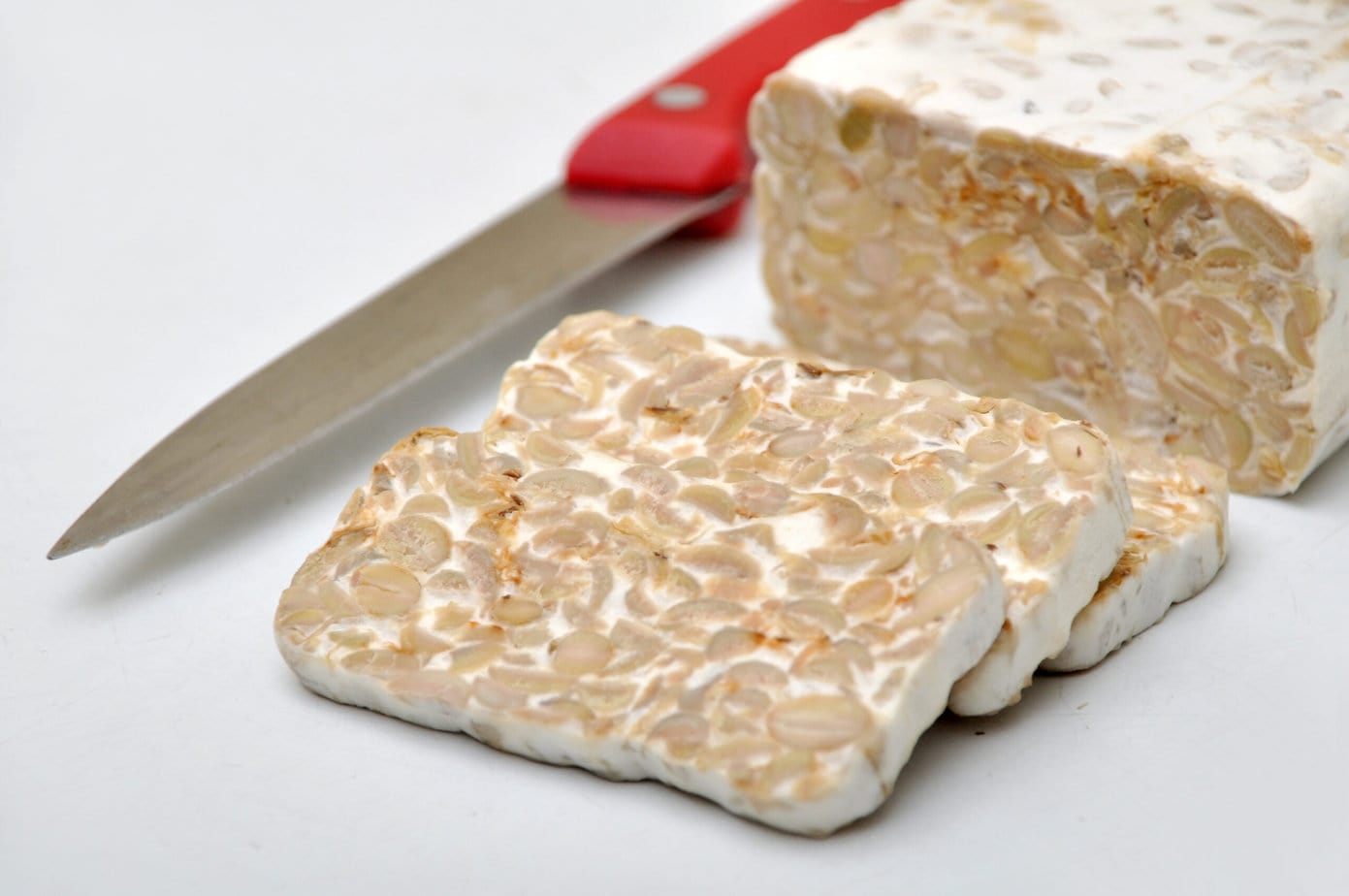
Ingredients
- 400 g dried soybeans use whole beans
- 4 tablespoons rice vinegar
- 0.75 teaspoons tempeh starter (Rhizopus; see notes)
Procédé
- Soak the soybeans overnight, or for at least 8 hours. Drain.400 g dried soybeans
- Rinse the soybeans several times with fresh water, then place them in a large pot and add fresh water to cover by about 2.5 cm above the beans.
- Cover and cook over medium heat.
- Keep an eye on the pot. If it starts to boil over, set the lid slightly ajar to let more steam escape, then reduce the heat. Once the excess steam has dissipated, cover the pot again.
- Check the water level from time to time. Begin testing the beans for doneness after 30 minutes. Add more water if needed to cook the beans longer. Soybeans can take 30 minutes to 1 hour to cook.
- Cook until the beans are nearly done (about 80%), then add the vinegar. Continue cooking until tender but not mushy.4 tablespoons rice vinegar
- Once the beans are cooked, drain off almost all the water.
- After draining, return the pot to the heat to evaporate the remaining liquid. Do not dry out the beans; the liquid should simply be gone.
- Let the beans cool until they are about 35°C.
- Add the Rhizopus starter to the beans and mix well.0.75 teaspoons tempeh starter (Rhizopus; see notes)
If using a zip-top bag:
- Poke holes in the bag at 2 cm intervals all over. Divide the beans into your desired portions and pack them into perforated zip-top bags. Seal, then fold as needed to create an even, compact thickness. Spread the beans evenly.
If using a glass or ceramic dish:
- Set out the dish and a large plastic container.
- Spread the beans in an even layer in the dish. Place the dish, uncovered, inside the plastic container, close it, and keep in a warm place for 36 to 48 hours.
- After 36 to 48 hours (with either method), the spores should be fully developed and the tempeh is ready. Cut into smaller portions for storage, if you like.
Notes
You can buy tempeh starter here: https://www.tempeh.info/starter/tempeh-starter.php
As-tu réalisé cette recette ?Tague @marcwiner sur Instagram !